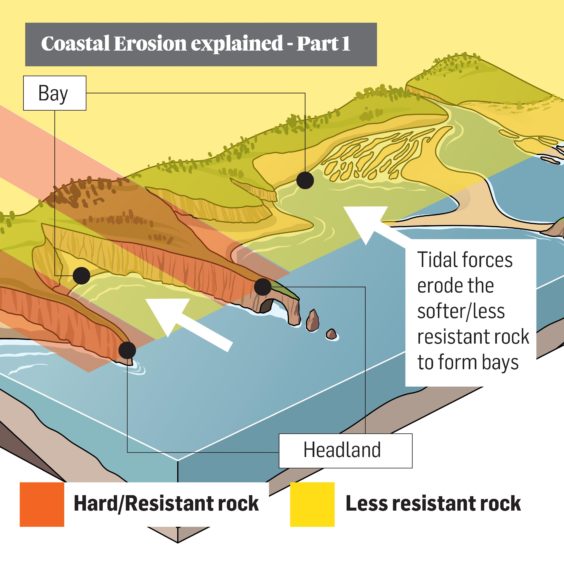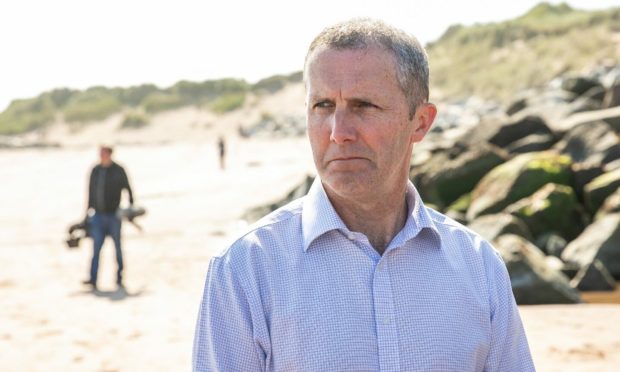Coastal erosion in Montrose could see the number of “flood corridors” between the town and the sea treble in only three years.
Researchers from the Scottish Government’s Dynamic Coast project have been studying the likely impact of coastal erosion on locations including Montrose and St Andrews.
Scientists believe the continuing erosion could create two additional flood corridors within three years, making serious flooding more likely.
Currently, there is only one flood corridor on the town’s beach.
Montrose councillor Bill Duff, SNP, said: “The clear message is the need to take action in the next five years to protect Montrose.
“Any delay will potentially put the town at risk and will require additional expenditure when defensive work is finally done.
“We have been given the ‘sell by’ dates for some of our assets.”
How has the risk of flooding in Montrose changed?
Further erosion could create a fourth flood corridor in Montrose within six years, the research shows.
This could see flood events which used to occur once every 200 years take place every 75 years by 2050.
By 2080, the 200-year flood event could occur every 10 years.

A flood corridor allows seawater to reach behind the sand dunes, which in turn increases the chance of flooding.
Dr Alistair Rennie of NatureScot and Prof Jim Hansom of Glasgow University lead the project.
They are two of the foremost scientific experts in Scotland on coastal erosion.
Their research focuses on Montrose and another six sites around Scotland.
In St Andrews, the worst erosion is happening at the upper beach of the West Sands.
If no action is taken, even stable dunes will retreat there within 30 years.
What does coastal erosion mean for the rest of Scotland?
The wider issue could cause £1.2 billion of damage to homes, businesses and crucial infrastructure across Scotland by 2050, the researchers claim.
They estimate that 647 residential properties near the Scottish coast are at risk if coastal erosion continues at its current pace.
Erosion could impact some 5km of railway lines and 55km of roads.
Michael Matheson, net zero secretary for the Scottish Government, visited Montrose beach to talk about the research.
He said: “We are already locked into future sea level rises and therefore we must plan for the worst case scenario on the coast.
“In Montrose, up to 80 metres of beach has eroded since the 1980s. A further 120 metres could erode over the next 40 years, breaching the main dune ridge.”
He said the upcoming COP26 climate conference in Glasgow offers the “world’s best chance” to avert the worst impacts of climate change — including coastal erosion.
What are the Scottish Government doing to tackle the problem?
The Scottish Government is hosting a National Climate Resilience Summit in the coming months to raise awareness of the issue.
They are asking all local authorities to prepare coastal adaptation plans. The Scottish Government is making an additional £12 million of investment available for this.
Mr Matheson said concerned homeowners living near the coast should keep in touch with their local authority.
“Those who stay in the Angus area, the most important thing they can do is to engage with Angus Council, who have a very strong and robust plan in place.”
He said this engagement will help keep people abreast of what changes are in store.
“They can get advice from the council on what they can do and what they should watch for,” he added.










